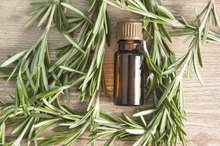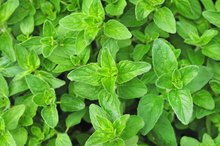What does fact checked mean?
At Healthfully, we strive to deliver objective content that is accurate and up-to-date. Our team periodically reviews articles in order to ensure content quality. The sources cited below consist of evidence from peer-reviewed journals, prominent medical organizations, academic associations, and government data.
The information contained on this site is for informational purposes only, and should not be used as a substitute for the advice of a professional health care provider. Please check with the appropriate physician regarding health questions and concerns. Although we strive to deliver accurate and up-to-date information, no guarantee to that effect is made.
Ayurvedic Herbs for the Pituitary Gland
“Knowledge of how to live” is the meaning of the term Ayurvedic, also known as the traditional medicine practiced in India. Herbal formulas are heavily used in Ayurvedic medicine. The pituitary gland controls hormone functions such as our temperature, thyroid activity, childhood growth, testosterone production in men and ovulation and estrogen production in women, according to The Department of Neurosurgery at the University of Pittsburgh. Some herbs have properties that support the work of the pituitary gland.
Sandalwood
The fragrant bark of the evergreen sandalwood tree is used in herbal remedies and in the making of perfumes. An article in the June 14, 2010 edition of the Daily Mail (U.K.) cited sandalwood as one essential oil used as a remedy for insomnia. The complex inter-working of the adrenal glands and the pituitary gland are involved in regulating the body's ability to wind down and sleep. Therefore, using sandalwood to care for your pituitary gland may have the added advantage of enhancing your love life.
- The fragrant bark of the evergreen sandalwood tree is used in herbal remedies and in the making of perfumes.
- An article in the June 14, 2010 edition of the Daily Mail (U.K.) cited sandalwood as one essential oil used as a remedy for insomnia.
Chasteberry
Damiana Tea for Fertility
Learn More
The herbal properties of the chaste tree reside in its berry fruit. A native of southeast Asia, the chaste tree has been naturalized to the southeastern United States, making it readily available in health food stores. The Journal of Clinical Nutrition Insights published an article in 1998, by Joseph L. Mayo, M.D., which states that chasteberry may have the ability to normalize the balance of estrogen and progesterone in women. He says, “Improving the levels of progesterone may be especially useful during peri-menopause when menstrual irregularities are common.”
- The herbal properties of the chaste tree reside in its berry fruit.
- The Journal of Clinical Nutrition Insights published an article in 1998, by Joseph L. Mayo, M.D., which states that chasteberry may have the ability to normalize the balance of estrogen and progesterone in women.
Gotu Kola
Proclaimed as the “fountain of life” by an ancient Chinese legend, the gotu kola herb has a long history of use in Ayurvedic medical traditions. The dried leaves and stems of the gotu kola plant contain active chemicals called triterpenoids. These compounds have been shown in studies to enhance the healing of wounds, according to the University of Maryland Medical Center. The Natural Health and Longevity Resource Center claims that gotu kola is also believed to nourish the brain, which is the seat of the pituitary gland 3.
- Proclaimed as the “fountain of life” by an ancient Chinese legend, the gotu kola herb has a long history of use in Ayurvedic medical traditions.
- The Natural Health and Longevity Resource Center claims that gotu kola is also believed to nourish the brain, which is the seat of the pituitary gland 3.
Related Articles
References
- National Center for Complimentary and Alternative Medicine: Intro to Ayurvedic Medicine
- UK Daily Mail (June 14, 2010): How to Treat Allergies, Hormonal Conditions and Insomnia with Complementary Therapies
- Natural Ways to Health: Adrenal Weakness
- American Family Physician: Chasteberry
- Hashim, P. Centella asiatica in food and beverage applications and its potential antioxidant and neuroprotective effect. Int Food Res J. 2011;18(4):1215-22.
- Gohil KJ, Patel JA, Gajjar AK. Pharmacological review on Centella asiatica: A potential herbal cure-all. Indian J Pharm Sci. 2010;72(5):546–556. doi:10.4103/0250-474X.78519
- Puttarak P, Dilothornsakui P, Saokaew S, et al. Effects of Centella asiatica (L.) urb. on cognitive function and mood-related outcomes: A systematic review and meta-analysis. Sci Rep. 2017;7(1):10646. doi:10.1038/s41598-017-09823-9
- Chong N, Aziz Z. A systematic review of the efficacy of Centella asiatica for improvement of the signs and symptoms of chronic venous insufficiency. Evid Based Complement Alternat Med. 2013;2013:627182. doi:10.1155/2013/627182
- Luzzi R, Belcaro G, Ippolito E. Carotid plaque stabilization induced by the supplement association Pycnogenol® and centella asiatica (Centellicum®). Minerva Cardioangiol. 2016;64(6):603-9.
- Bylka W, Znajdek-Awiżeń P, Studzińska-Sroka E, Brzezińska M. Centella asiatica in cosmetology. Postepy Dermatol Alergol. 2013;30(1):46–49. doi:10.5114/pdia.2013.33378
- Nagoor Meeran MF, Goyal SN, Suchal K, Sharma C, Patil CR, Ojha SK. Pharmacological properties, molecular mechanisms, and pharmaceutical development of asiatic acid: A pentacyclic triterpenoid of therapeutic promise. Front Pharmacol. 2018;9:892. doi:10.3389/fphar.2018.00892
- Penn State Hershey. Gotu kola. Updated 2015.
- Ong GH, Yap CK, Maziah M, Tan SG. Heavy metal accumulation in a medicinal plant Centella asiatica from Peninsular Malaysia. Journal of Biological Sciences, 2011;11:146-155. doi:10.3923/jbs.2011.146.155
Writer Bio
Michelle Wright has written articles, press releases and newsletters throughout her writing career, which began in 1982 at John W. North High School in a yearbook class. Wright studied Childhood Development, Communications and Care for the Elderly at Riverside Community College, Mt. San Jacinto and Chaffee Colleges in Southern California.









